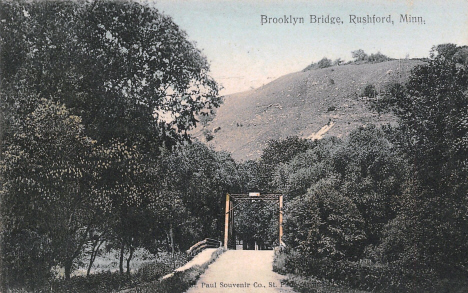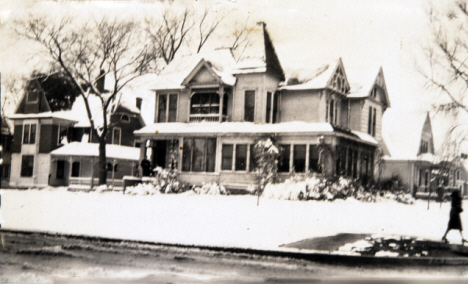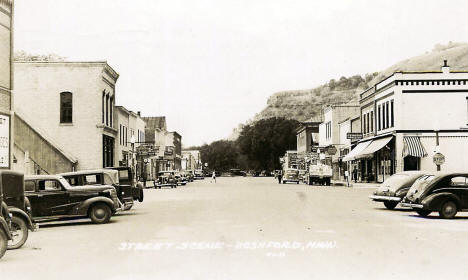


 |
 |
 |
|
|
Navigation LakesnWoods.com
© 2004-2024 DCMA, Defamation, Copyright and Trademark Infingement Policy
Minnesota Map with Walleye Accent Coffee Mug
Minnesota State Bird
|
|
|
|
|
|
|
|
|
|
|
|
|
|
|
|
 |
Norwegian American Women: Migration, Communities, and Identities |
| The history of Norwegian settlement in the United States has often been told through the eyes of prominent men, while the women are imagined in the form of O. E. Rølvaag's fictionalized heroine Beret Holm, who made the best of life on the frontier but whose gaze seemed ever fixed on her long-lost home. The true picture is more complex. In an area spanning the Midwest and rural West and urban areas such as Seattle, Chicago, and Brooklyn, Norwegian American women found themselves in varied circumstances, ranging from factory worker to domestic, impoverished to leisured. Offering a comprehensive, interdisciplinary approach, Norwegian American Women: Migration, Communities, and Identities considers the stories of this immigrant group through a gendered lens. | |
| Buy This Book Now! |
 Brooklyn Bridge, Rushford Minnesota, 1916 LakesnWoods.com Postcard and Postcard Image Collection - click to enlarge |
|
|
|
|
|
|
|
|
 Depot, Rushford Minnesota, 1929 Courtesy Minnesota Historical Society - click image to enlarge or purchase |
 |
Steam Railroads of Northern Iowa and Southern Minnesota |
| Steam railroading became an integral part of the communities in northern Iowa and southern Minnesota in the late 1800s. The railroad provided hundreds of jobs and the ability to transport both goods and passengers across the Midwest. The Chicago & North Western Railway, the Chicago Great Western Railroad, the Minneapolis & St. Louis Railway, the Chicago, Rock Island, & Pacific Railroad, and the Chicago, Milwaukee, St. Paul & Pacific Railroad (called the Milwaukee Road by employees) served five principal gateways, which included Chicago, Illinois; Minneapolis-St. Paul, Minnesota; Omaha, Nebraska; and Kansas City and St. Louis, Missouri. Operating steam engines required tremendous manpower, and by the 1920s, some steam passenger trains were replaced by more efficient motor cars, fueled by oil-powered engines. Steam engines could no longer compete with the reduced operating costs, smaller crew requirements, and time savings provided by diesel, which ultimately led to the fall of steam in 1955. | |
| Buy This Book Now! |
|
|
 Residence, Rushford Minnesota, 1929 Courtesy Minnesota Historical Society - click image to enlarge or purchase |
|
|
 Street scene, Rushford, Minnesota, 1940s LakesnWoods.com Postcard and Postcard Image Collection - click to enlarge Buy a reproduction of this postcard - Buy a print of this image |
|
|
 |
Minnesota's Lost Towns Southern Edition |
| Includes Amherst
Village, Big Springs, Bratsberg, Carimona, Cherry Grove,
Choice, Clear Grit, Elliota, Etna, Fillmore Village and 12
more in Fillmore County!
Pack your bags and come along as we journey to over 125 lost towns in Southern Minnesota. Read how the Civil War, changes in transportation, county seat disputes and other historical happenings changed Minnesota’s landscape. Learn how and why lost towns and communities were created, how they thrived and why they eventually faded into history. Visit the people and places of Southern Minnesota in this fourth edition of the Minnesota’s Lost Towns series. Be sure to check out the other titles in the series: Northern, Central, and Northern II. |
|
| Buy This Book |
|
|
|
|
|
|
|
|
|
|
|
|
|
|
|
|
|
|
|
|
|
|
|
|
|
|
|
|
|
|
|
|
|
|
|
|
|||||
|
|
© 2004-2024 LakesnWoods LLC All Rights Reserved |
|
|||
|
| |||||